
Berlin Had Its Own Money After WW2 — and It Caused a Black Market Frenzy
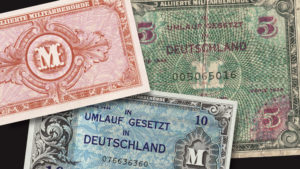
IN APRIL 1944, the United States War Department was consumed with thoughts of France. Operation Overlord, the invasion of Normandy, was only weeks away, and American and British war planners were enmeshed in the details of executing the world’s largest amphibious invasion. While Washington and London’s attentions were focused on Overlord, a little-noticed decision made elsewhere in the Pentagon set in motion a chain of events that led to one of the first major conflicts between the Americans and a primary wartime ally, the Soviet Union. The affair cost American taxpayers hundreds of millions of dollars, embarrassed the Treasury and War Departments, and set the tone for the tense relationship ahead between the two burgeoning superpowers. What caused the problem? Money.
BRINGING THE BACON
Occupation forces need money they can spend in the local economies, to buy goods and hire laborers. Frank A. Southard Jr., financial adviser for Allied Forces HQ in the Mediterranean, detailed in his 1946 book Finances of European Liberation the many repair and rebuilding needs the Allies faced as they liberated or occupied countries: “In the Mediterranean Theater, for example, 1,500 miles of roads had to be reconstructed. One American base section in Italy expended over 11 million man-hours on road repair.” The Allies hired local businesses to produce all sorts of goods, such as “rolling-mill products, yeast, furniture, coal and coke, and spare parts,” wrote Southard, adding that “considerable quantities of fresh food, mainly fruits and vegetables, were purchased in local markets.” The local population also needs access to a cash supply for their own business and personal needs.
But what if there’s no local money, or not enough? Retreating enemy forces might destroy money supplies, as the Germans tried to do when they abandoned Sicily. Or the money printing facilities might have been razed in battle. In these cases, occupying forces had to bring their own currency with them.
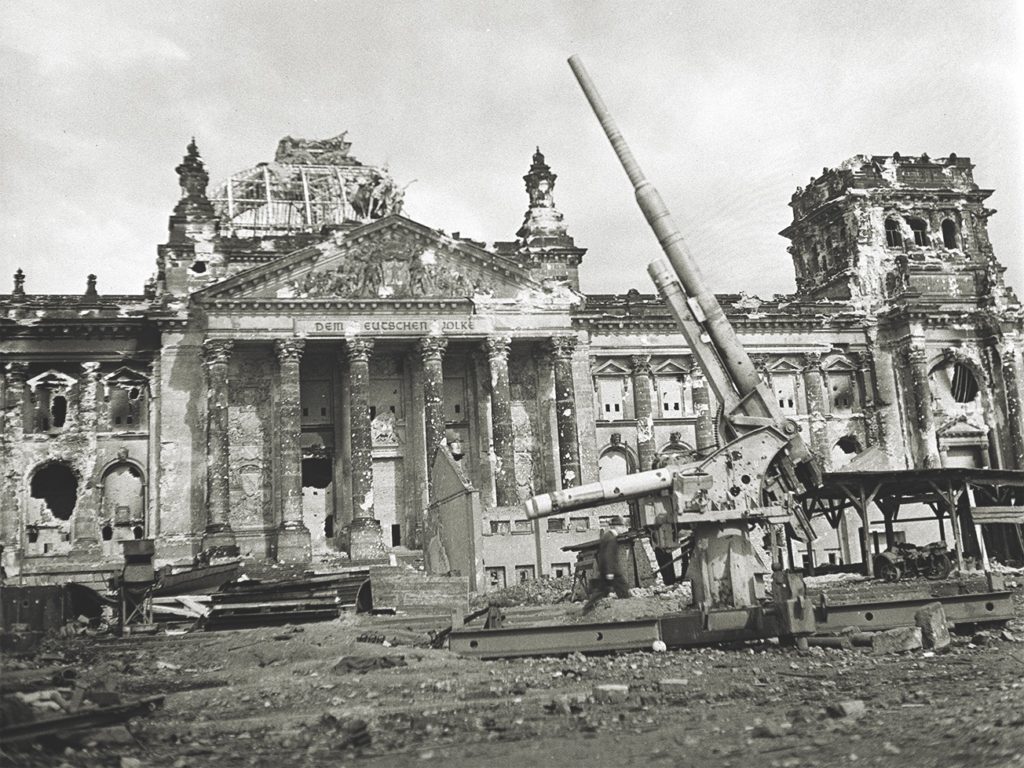
making a mark
THE AMERICANS DIDN’T WANT to use dollars overseas, for several reasons. In Europe, the goal was to have Germany bear the costs of the occupation. If the Germans didn’t have access to any dollars, that made it easier to ensure they were paying occupation costs out of their own funds and national currencies. In addition, American officials were concerned that dollars paid out by the military overseas might end up back in the United States, which in high enough volume could spark inflation. Finally, and more ominously, the War Department feared that U.S. dollars spent in Germany might make their way into the hands of Nazis, who could then give that money to their operatives in the U.S. to fund espionage or sabotage operations. The Americans therefore wanted an occupation currency that could be used only within the occupied countries.
Governments-in-exile of liberated countries like France, Belgium, and Holland didn’t want the U.S. to use dollars, either. It was the “strong desire of our allies to avoid the introduction into their economies of foreign currencies,” Assistant Secretary of State for Occupied Areas John Hilldring told a Senate committee in 1947. If American dollars were in circulation, the exchange would likely favor the dollars and the local currencies would lose value.
So instead, even as the war raged on, the Americans printed billions of dollars’ worth of occupation currencies—German marks, Italian lire, Japanese yen, Czech kroner, and so on. The currencies were in the same denominations as the local money they would supplement, but had different markings. Marks printed for use in Germany were labeled “Alliierte Militärbehörde” (Allied Military Authority). The Americans eventually produced over 500 million notes of what came to be known as “Allied Military Marks,” or AMM. Their total face value was more than 15 billion marks.
In early 1944 the U.S. Treasury Department hired an American banknote printing company to create the engraved printing plates for AMM and had draft copies of the notes by February. The Americans, who were already planning to produce occupation currency in every theater of the war, took the lead and offered to print all the AMM that U.S., British, and Russian forces would need in occupied Germany. The British agreed, but the Soviets balked. Assistant Secretary Hilldring told the Senate committee that the Russians were worried that if the Americans printed all the Allied AMM, the Soviets might not have enough occupation money when they needed it. Hilldring paraphrased the Russian argument: “We agree to use your currency, but we cannot trust you to print it and to fly it halfway around the world to Moscow in time for us to get it to [Soviet general] Zhukov and his troops.” The Russians instead insisted on receiving copies of the printing plates; the Soviets would then print their own AMM. Assistant Secretary of War Howard Petersen testified to the same Senate committee that, in April 1944, the “Russian government sent a note to the United States stating that if the plates were not delivered to the Russians, the Soviet government would be compelled to prepare independently military marks for Germany” which would have their “own pattern.”
The Americans and British opposed having two different sets of AMM circulating through postwar Germany and spent most of March 1944 trying to convince the Soviets to accept the American plan. They wanted Germany’s economy to rebound as quickly as possible, as a strong German economy would lessen the need for the Allies to spend huge sums to feed and sustain the defeated country. The main industrial area of Germany, the Ruhr, was in the northwest, which would be the British occupation zone. The major food-growing areas were in eastern Germany, the Soviet zone. In order for Germany to recover economically—and feed itself—Germans had to be able to trade across the whole country, not just within occupation zones. “The use of a different currency by each of the invading forces would have prejudiced the adoption of common economic and financial policies” for occupied Germany, testified the Treasury Department’s Andrew Overby before the Senate committee.
The Treasury Department asked the War Department for guidance. The War Department stated its concern that the Russian request for printing plates would become a source of major friction between the uneasy allies. An April 13, 1944, cable from the U.S. ambassador to the U.S.S.R., W. Averell Harriman, reaffirmed the Soviet intent to print their own distinct occupation currency if they didn’t receive the AMM printing plates. The British urged the Americans to give the Russians the plates. Even though Treasury knew that providing the AMM plates to the Russians might result in an unchecked flow of occupation cash into Germany, it soon acquiesced and on April 18 the Bureau of Engraving and Printing delivered a supply of plates, paper, and inks for AMM to the Soviet Embassy in Washington, D.C. The Americans had literally given the Russians a license to print money.
SPENDING SPREE
FIFTEEN MONTHS LATER, in July 1945, American occupation forces entered Berlin. They found a devastated city, a shattered economy, a broken people—and a Soviet occupation force flush with cash. Many Soviet soldiers hadn’t been paid for months, even years. When the Soviet occupation forces settled into Berlin, the Red Army paid thousands of soldiers their back pay—but in AMM, not rubles. The Russians did not allow their servicemen to convert AMM back into rubles, so once the soldiers returned to Russia, their pay would be worthless.
Soviet soldiers began buying whatever nice things they could find in Berlin. “They went out buying bicycles, watches, jewelry, anything they could use themselves or send home,” said Colonel Frank Howley, the first head of American Military Government in Berlin. “What they didn’t buy, they stole—which was a lot.” Prices for luxuries—especially portable ones—skyrocketed. But there were only so many easy-to-carry consumer goods left in war-torn Berlin.
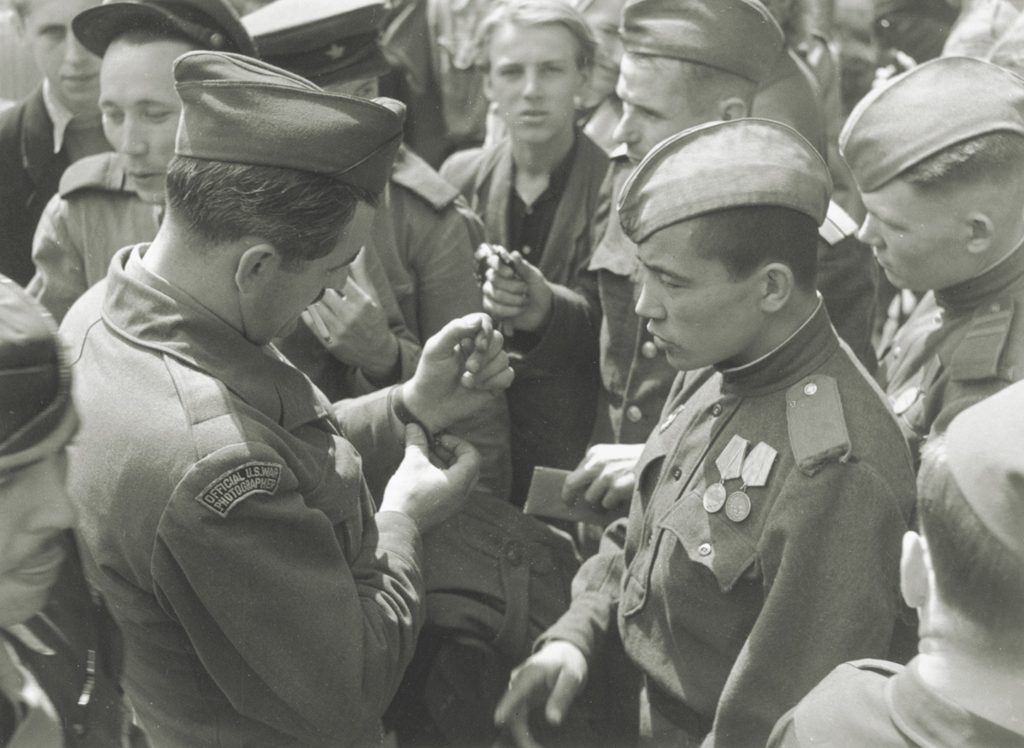
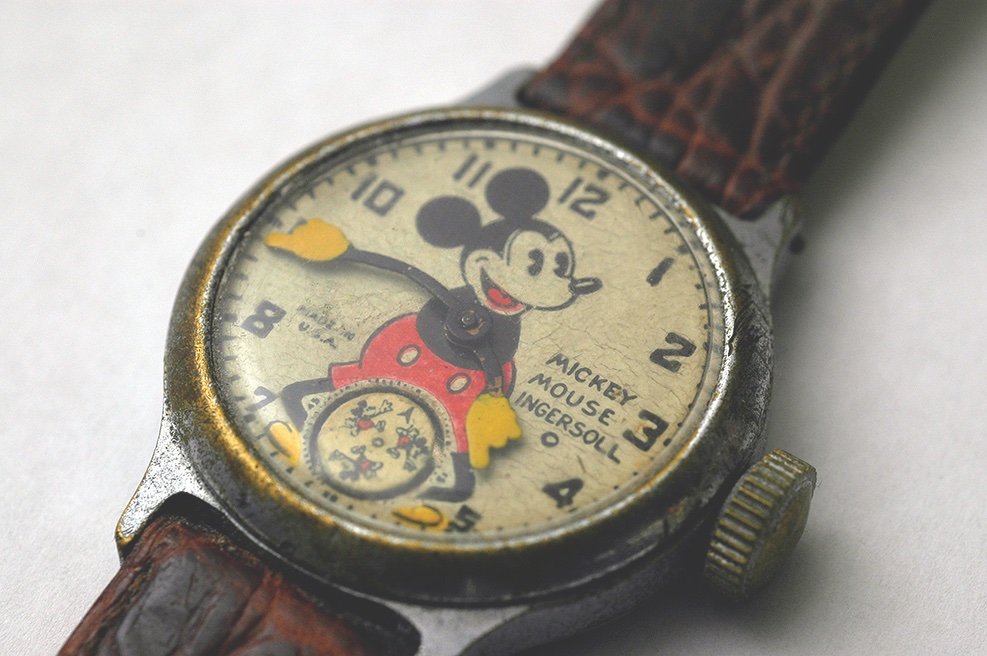
The Americans, on the other hand, had plenty of nice things. Wristwatches, cigarettes, goods from the PX—those appealed mightily to the average Russian soldier. Wristwatches especially. Russians saw wristwatches as a visible sign of “affluence and an established, even exalted position in life,” Howley explained. “Peasants never owned watches.” Howley said Russian soldiers would come up to Americans asking for “uhre, uhre” (German for “watches” or “clocks”) and that “some Russian soldiers wore half-a-dozen watches. A Mickey Mouse watch was worth more than a jewel-studded trinket from Cartier.” And the Russians had the money to pay.
That summer Berlin turned into one huge open-air market. “In the black market around the Brandenburg Gate, the Russians, Joes and Tommies do a lively business,” wrote the Chicago Tribune Press Service in early August, while an AP story in September reported, “For more than two months Berlin has been the ‘watch capital’ of the world,” adding that “Red Army soldiers provided a seemingly insatiable market for U.S. timepieces, paying as much as $1,500 for a radium face trinket with a loud tick.” (A typical PX watch cost $20.) General Harry Vaughan visited Berlin that summer as President Truman’s military aide at the Potsdam Conference and later boasted he sold a $50 timepiece for $500.
American soldiers sold the Soviets goods from the PX, cigarettes, even parts of their military gear, which the Russians paid for in AMM. “Marks are accumulating by the thousands in the pockets of GIs,” wrote the AP in September. “It is nothing for a jeep driver or clerk to flash a bankroll which, if it were greenbacks, would be worth from $5,000 to $15,000.” AMM had a conversion rate of 10 to the U.S. dollar. And, critically, unlike their Russian counterparts, American troops could convert AMM back into dollars. The scenario the Americans feared in 1944 was coming to pass.
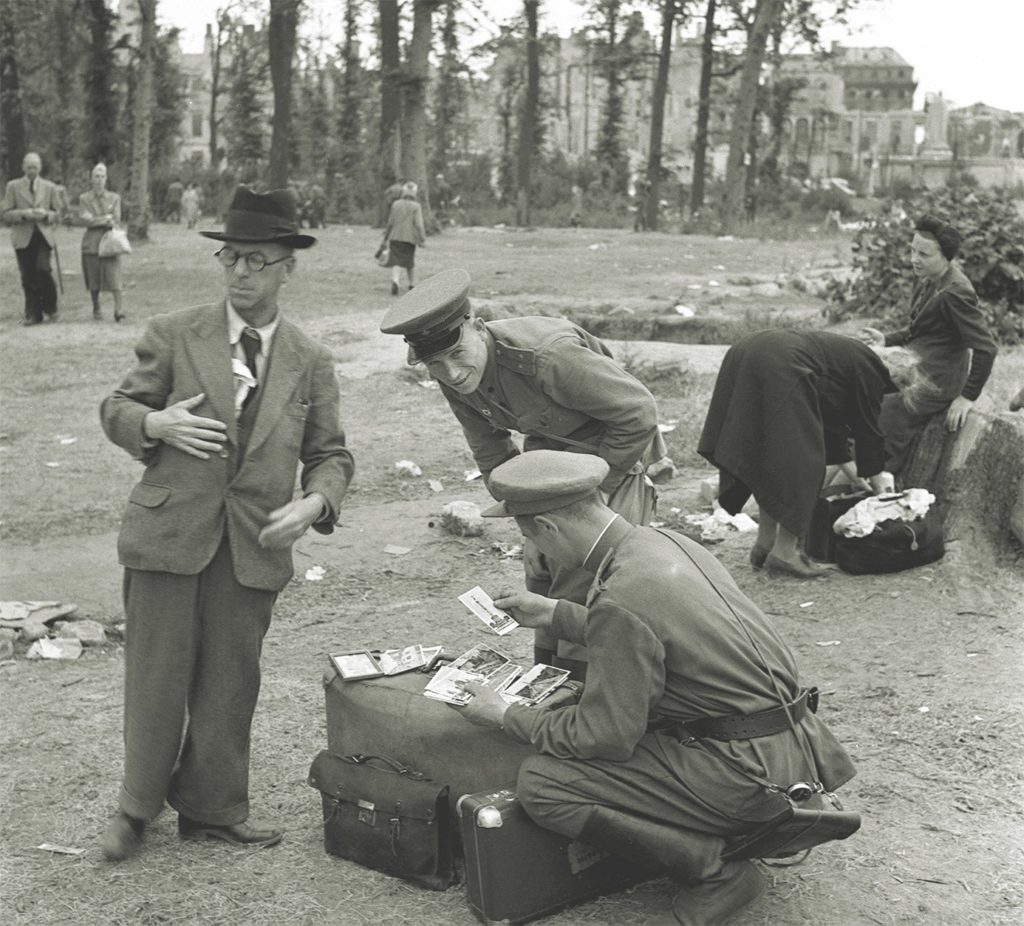
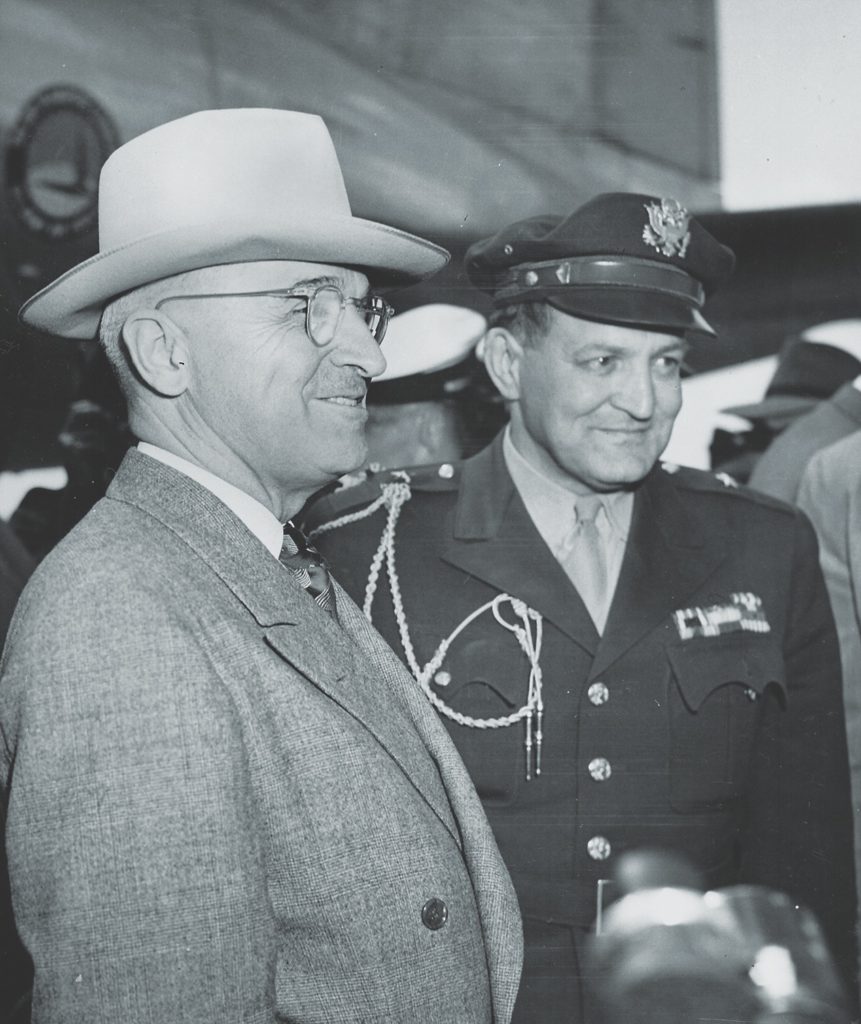
MORE MONEY, MORE PROBLEMS
THE ARMY EXPECTED that overseas troops would draw some of their pay in local currency. This allowed U.S. soldiers to shop, go to restaurants and bars, and pay locals to do their laundry. The War and Treasury Departments never intended for overseas troops to have large amounts of foreign currency. Instead, American soldiers in Berlin were awash in AMM.
Treasury’s Overby told the Senate committee why that was a problem for American taxpayers, who were ultimately responsible for paying for the AMM. If an American soldier in Berlin presented a stack of AMM for conversion into dollars, it was hard—often impossible—for the finance officer to determine what percentage of those AMM came from authorized pay, and what percentage came from black-market activity. So most often the finance officers simply exchanged the marks for U.S. dollars, especially early in the occupation before tighter controls were introduced. G.I.s used those dollars to wire money home or buy war bonds or other savings instruments.
G.I.s with suspiciously large stacks of AMM figured out other ways to turn their black-market cash into dollars. They bought small, expensive items such as jewelry that were easy to carry (and resell) stateside from Berliners or in the PX—which, like other soldier support services, allowed G.I.s to pay in AMM. Likewise, they went to military post offices, bought sheets of postage stamps, and sent them home. Relatives would then return the sheets to stateside post offices for cash refunds. G.I.s also used AMM to pay Western Union and the Radio Corporation of America for wired messages and telephone calls home.
In addition to converting soldiers’ pay into dollars, U.S. Army finance offices were also obligated to exchange into dollars the AMM the PX received from all authorized patrons, such as Red Cross workers, army civilians, and displaced persons who’d been hired to guard American facilities. Civilian companies that the army authorized to do business with G.I.s in Germany, like Western Union and RCA, also asked the army to redeem its occupation currency. The result: a huge amount of AMM, much of it undoubtedly produced by Russian plates, was exchanged for real U.S. dollars.
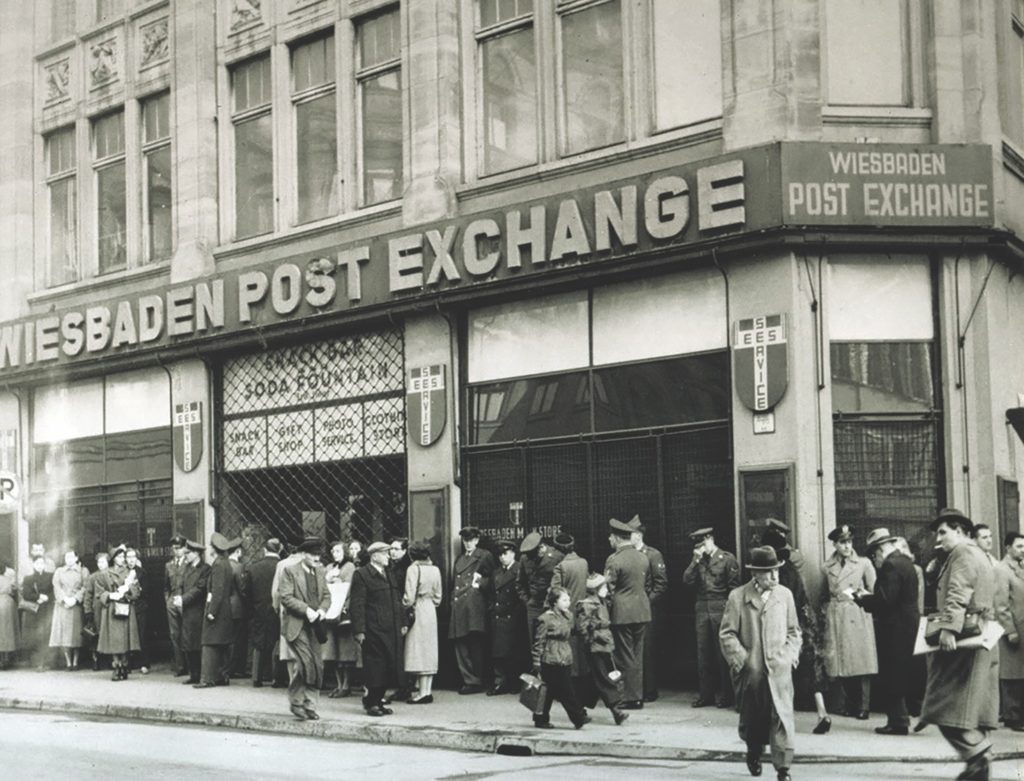
The Pentagon asked the United States Forces European Theater, the army’s first postwar command in Europe, to implement currency controls. But many army commanders in Europe balked. In the summer of 1945, the army’s attention in Europe was on transferring thousands of troops to the Pacific for the invasion of Japan. In autumn, the army focused on demobilization and redeployment, and enthusiasm for currency exchange control was limited. Units in Europe constantly reorganized as experienced troops were sent home. That left lots of inexperienced leaders at the lower command levels—the levels where most currency exchange occurred.
By the fall of 1945, the American media picked up the story. “American soldiers sent home more money in August than they drew from the pay window,” said the AP in September, noting that “figures published today from the Berlin district finance office showed that $3,044,224 was paid to occupation troops, who then invested $3,153,517 in money orders, personal transfer accounts, war bonds and soldiers’ deposits.” Washington knew it was on the hook to pay for all those Russian-printed AMM that U.S. soldiers had redeemed.
Paying THE TAB
IN JUNE 1947, the Senate held hearings on the AMM affair—where Overby and other U.S. officials gave their testimony. By then, though, the army had solved the problem. In 1946 it switched to military payment certificates, or “scrip,” to pay the troops in Germany. Scrip was accepted only at authorized outlets, like the PX—greatly limiting the G.I.s’ ability to use their pay for black-market activities—plus the military began to strictly regulate the ability of U.S. personnel to convert local and occupation currencies into dollars. But the damage had been done. By June 1947, the bill had arrived. The cost to American taxpayers to cover the redeemed AMM was $250 million more than what Washington had budgeted for occupation money in Germany—approximately $3 billion in today’s money. No wonder the Senate was mad.
But many commanders and troops, especially those who served in combat, felt they’d earned the right to benefit in some small way from their wartime experiences. Those troops, and their families and friends, were also voters. Lieutenant General Lucian Truscott, who commanded the Fifth and Fifteenth Armies in Italy, and replaced George S. Patton as commander of the Third Army in Germany, spoke for millions of G.I.s when he argued to the Senate committee:
The [American] soldier could see no reason why he should not sell personal items which he had purchased, or which had been sent to him from home, if he so desired…. Letters from home, newspapers and radios informed him that many at home who had not suffered his hardships were making profits from the war, as he felt, at his expense. He could see no reason why he should not make a small profit now when he had, for the first time, a small opportunity to do so.
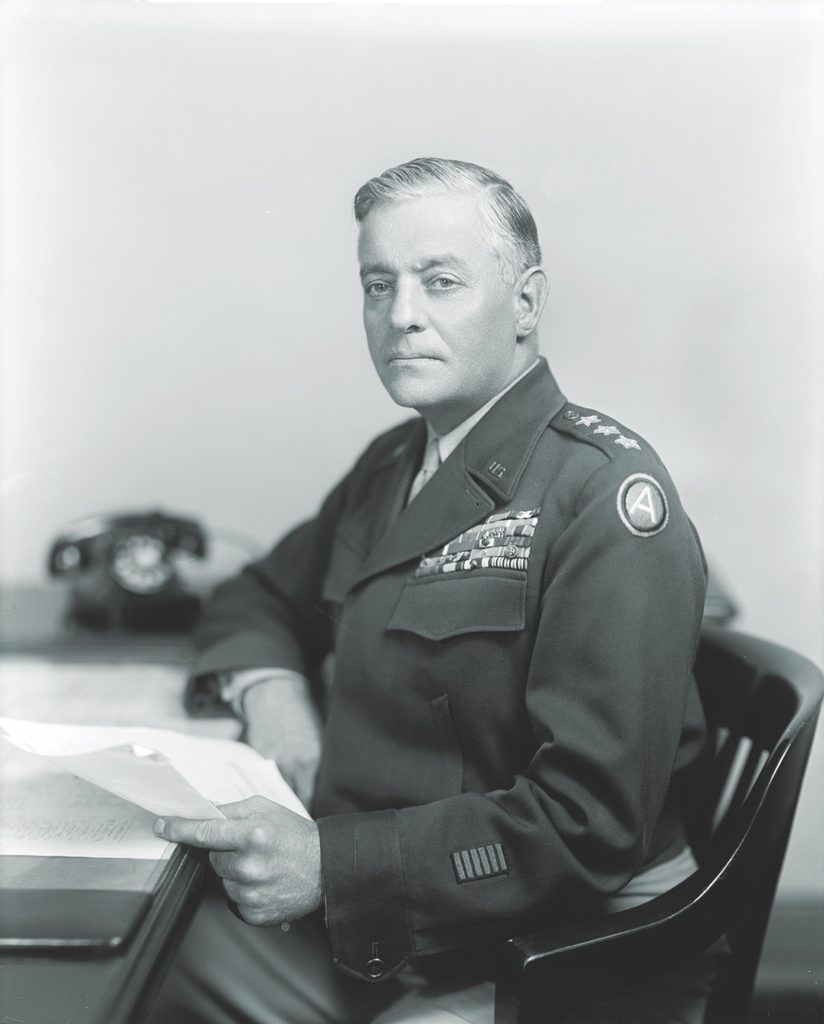
Many Americans still feared—along with Senator Styles Bridges of New Hampshire, who chaired the committee that investigated the AMM affair—that, as he put it, “a large sum of their tax dollars” had been used to “furnish a free ride to the Russians via printing press money of our own devising.” Understandable. But, in the spring of 1944, Washington had had much bigger problems to worry about, including appeasing their contentious ally to the east. Thus, the Allied Military Marks episode ended up as one of the many unfortunate but unavoidable side effects that happen when governments conduct huge operations, like a world war. The American taxpayer did end up furnishing a “free ride,” as Senator Bridges had feared—but to American G.I.s, not Russians. ✯

